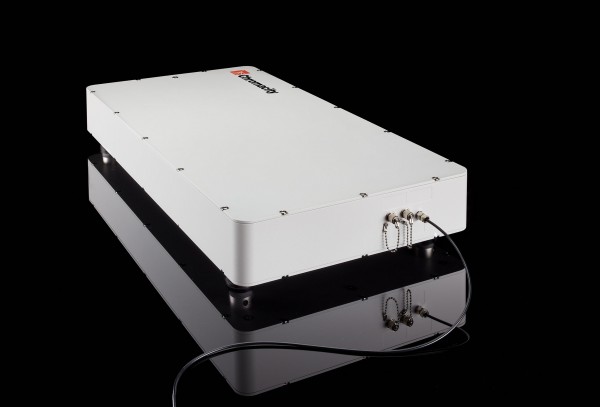1280 nm; Pulse Energy 300 pJ; Repetition Rate 100 MHz; Pulse Duration 80 fs; Output Power ≤30 mW
The Chromacity 1280 femtosecond laser generates femtosecond pulses, with a fiber delivery output, to drive advances in test and measurement applications within the semiconductor industry.
While operating at 1280 nm, Chromacity’s ultrafast laser can also generate 80 fs pulses across the 1250 nm to 1310 nm wavelength range, and combined with excellent beam quality, the Chromacity 1280 has scope to broaden fundamental research and material characterization capabilities.
The 1280 nm laser inherits Chromacity’s novel laser design architecture and patented manufacturing expertise to develop a high-performance and truly stable light source, which is operationally ready with minimal set-up time.
Within the range of typical applications for this laser, laser scanning and optoelectronic imaging of integrated circuits is crucial towards optimal semiconductor failure analysis, at a time when the industry faces global chip shortages. With seamless integration into Laser Assisted Device Alteration (LADA) platforms, Chromacity’s robust 1280 nm laser source can help determine soft defect localization, using near-IR microscopy techniques including (2P-LADA).
Further applications include Two-Photon Laser Assisted Device Alteration (2P-LADA), a high-resolution imaging technique which exploits two-photon absorption (TPA) to deliver precise three-dimensional localization of the photocarriers, injected by the TPA process, to accurately locate and characterize failures, with optimum spatial and temporal performance.
Similarly, the Two-Photon Optical Beam Induced Current (TOBIC) technique is another laser-scanning method for imaging integrated circuits. This technique uses ultrashort-pulse lasers to induce a photocurrent which is subsequently mapped to generate an image. TOBIC imaging occurs around 1250 nm to 1550 nm, where the beam is easily transmitted through the silicon band gap.
Key Features:
- Fiber Output
- Compact Laser Housing
- Air-cooled Operation
- Intuitive Web Browser Interface
- Remote Installation Capability
- Output Power: Up to 30 mW From Fiber-coupled Output
- Peak Power: 4kW
- Wavelength: 1280 nm
- Spectral Bandwidth: 80 nm
- Pulse Duration: 80 fs
- Pulse Energy: 300 pJ
- Repetition Rate: Locked to 100 MHz
- Control Interface: Web Browser Interface, Ethernet and Serial Port (RS232) Also Available
- Cooling: Air-cooled
- Electrical: 110-240 VAC, 50-60 Hz, 80 W
- Dimensions 1280 Module: 614 mm x 304 mm x 96 mm (LxWxH)
Applications: Two-photon Laser-assisted Device Alteration (2p LADA) in Silicon Integrated Circuits; Two-photon Optical Beam Induced Current (TOBIC); Material Characterization; Fundamental Research; Interrogating Photonics Integrated Circuits (PIC)
| Product Group: | Femtosecond Laser |
| Manufacturer Series Name: | Chromacity 1280 |




















